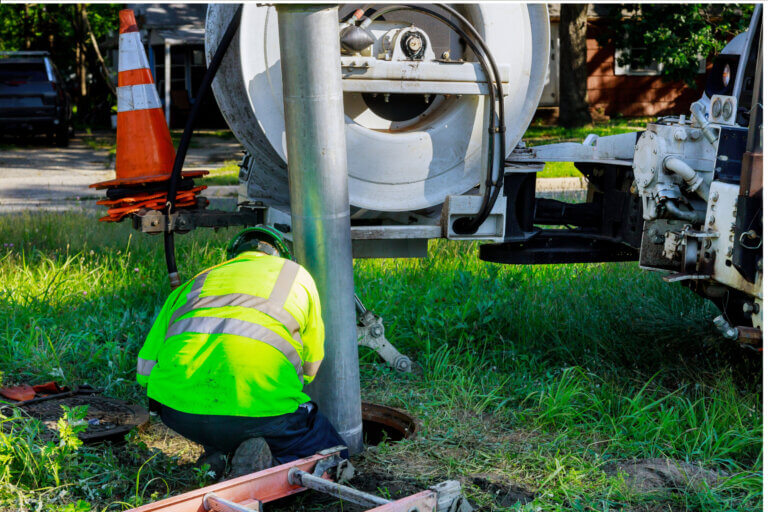Locating your home’s sewer line may not be something you think about often, but it’s essential knowledge for maintaining your septic system and avoiding costly damage. Understanding the path of your sewer line can also help you anticipate any potential sewer line from house to street cost, which can be significant if issues arise. Whether you’re dealing with potential sewer line problems or planning landscaping, knowing where your sewer line runs can save you from a lot of trouble. Here are several methods to help you identify the path of your sewer line from your house to the street.
Why Locating Your Sewer Line is Important
Knowing the location of your sewer line is important for several reasons:
Protect Your Sewer Line from Tree Roots
Tree roots are a major cause of sewer line damage. When trees or large shrubs are planted too close to the sewer line, their roots can penetrate the pipes, leading to blockages, leaks, and severe damage. By knowing where your sewer line is, you can plan your landscaping to avoid these issues.
Prevent Damage During Construction or Landscaping
If you’re planning construction or landscaping projects that involve digging, it’s crucial to know where your sewer line is located. Even simple tasks like installing a fence can accidentally damage the sewer line if it’s only a few feet below the surface, leading to leaks and expensive repairs.
Early Detection of Septic Issues
Being aware of your sewer line’s location helps you monitor for potential problems. Identifying leaks, clogs, or other issues early allows for timely repairs, preventing more serious damage and costly fixes down the line.
Signs of a Clogged or Damaged Sewer Line
Before discussing methods for locating your sewer line, it’s important to recognize signs of a potential problem. Watch for the following indicators:
- Slow-draining sinks or toilets
- Gurgling sounds from drains
- Unpleasant odors from drains
- Sewage backups in your home
- Patches of unusually lush grass in your yard
These signs suggest that your sewer line may be clogged or damaged, making it crucial to locate and address the issue promptly.
How to Find Your Sewer Line from House to Street: 6 Best Techniques
Now that you understand the importance of locating your sewer line and recognizing potential issues, here’s how to find it:
1. Check Your Home Documents and Blueprints
Your home’s blueprints and other documents are an excellent starting point for locating your sewer line. These documents often include details about the property’s utility layout, including the sewer line’s path. Search for any records, plans, or blueprints provided by the builder or previous homeowners. If available, these documents can offer precise details about the sewer line’s route, depth, and connection points, saving you time and effort.
2. Locate the Cleanout Pipe
Another practical and cost-effective method is to locate your home’s cleanout pipe. This white PVC pipe, usually with a removable cap, serves as an access point to your sewer system. It’s typically found in your yard, standing vertically a few feet away from the foundation and slightly protruding from the ground. If you can’t find it outside, check your basement or crawl space. Once located, removing the cap allows you to determine the direction of your sewer line, giving you valuable insight into its path without needing professional equipment.
3. Use a Pipe Locator
Using a pipe locator is one of the most reliable ways to find your sewer line. This specialized tool detects underground pipes, including sewer lines. Here’s how to use it:
- Calibrate the pipe locator correctly for sewer line detection.
- Start at a known point, like the cleanout pipe or a marked utility spot.
- Slowly walk the device across your yard, following the suspected sewer line path.
- The locator will emit signals or show readings when it detects a pipe.
- Mark the ground or place flags where the locator indicates the sewer line’s position.
- Double-check the detected path to ensure accuracy and record the route.
This method provides precision and is valuable for both homeowners and professionals.
4. Check with Your City
Your local municipality may have records or utility maps that include sewer line locations. In some cities, these maps are available online. You can typically access this information through your city’s website or by contacting the local utility department. This method is especially helpful in urban areas where utility infrastructure data is publicly available, allowing you to plan projects and avoid accidental damage during excavation or landscaping.
5. Dial 811
One of the easiest methods is to dial 811, the national hotline in the United States. This service connects you with your local utility company, which can send professionals to your property to mark the location of underground utilities, including sewer lines. While it may take a few days, this free service ensures accuracy and safety when working near your sewer line, helping you avoid accidental damage and gain a clear understanding of the sewer line’s path from your house to the street.
6. Hire a Septic Professional
If you’re unsure about locating your sewer line or dealing with a complex situation, hiring a local sewer service may be your best option. Professionals have the right equipment and expertise to accurately locate the line, providing peace of mind. This is especially beneficial if you already work with a septic pro for routine maintenance.
How to Prevent Sewer Line Damage
Preventing sewer line damage is essential for every homeowner. Here are some steps to help you protect your sewer line:
- Avoid driving over your sewer line.
- Refrain from planting large trees near the sewer line.
- Be careful when digging in your yard and mark the sewer line beforehand.
- Schedule regular maintenance and inspections by a professional.
Taking these precautions can help you avoid costly repairs and maintain a properly functioning sewer system.

